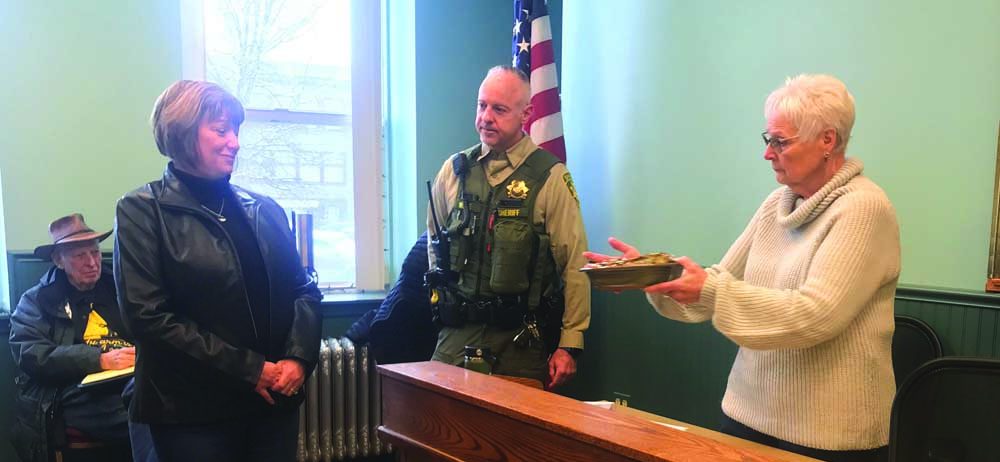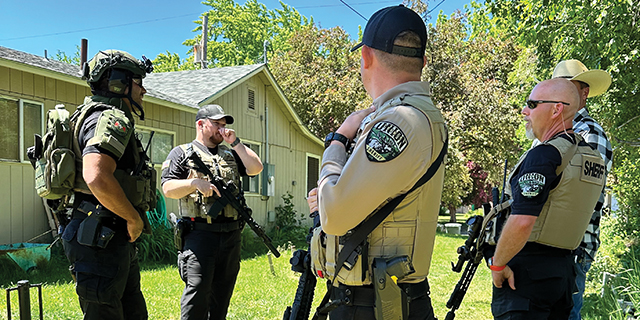In the woods: Abandoned mine near Granite the perfect place to make a horror movie
Published 7:00 am Saturday, August 14, 2021

- Jayson Jacoby
I know the perfect place to make a horror movie.
This is superfluous knowledge, to be sure, as I am still waiting, with an increasing lack of patience, for Hollywood to solicit my site location expertise.
In the meantime Cabell City, one of the least known but more interesting ghost “towns” in Northeastern Oregon, is ready to make a creepy backdrop for the sort of film in which teenagers are picked off one by one while wandering about asking “who’s there?” and invariably slinking into the darkest recesses of whatever buildings they come across rather than just running away.
I subjected the word “town” to the dubious purgatory of quotation marks because the place is not, precisely speaking, a town at all.
At least not in the way that other ghost towns, such as Granite, Bourne and Cornucopia, are.
Cabell City is the site of an abandoned gold mine along Onion Creek, a tributary of the North Fork John Day River about eight miles north of Granite.
It was never incorporated, nor did it boast a post office.
Yet Cabell City, whatever it lacks in official government recognition, has some of the best-preserved mining buildings in the region, including, most unusually, an intact home.
Relatively intact, anyway.
The house, which is well-appointed with packrat nests and piles of their diminutive droppings, is eerie enough to provoke an involuntary shudder in people who think “The Blair Witch Project” was actually a documentary.
The other buildings, including a multi-level mill chock full of cables, belts, chains and hulking metal machines that a miner might recognize, would also make fine settings for the bloody scenes that define the slasher genre.
It’s not unusual, certainly, to find scraps of machinery, or the ruins of a cabin, at a mine site.
But Cabell City’s structures are unusually sound, it seems to me.
A likely explanation is that the site is public land; for some reason, unlike dozens of other mining properties, it was never patented into private land.
Cabell City is, however, an active mining claim, so although you can walk around and peer into the creepiest nooks and crannies, you can’t pan Onion Creek or otherwise prospect for precious metals on the 60-acre site.
I have long been aware of Cabell City. It’s shown on most maps, and I have a passel of those.
But until late June I had never visited, even though a road — rough but not awful — leads right to the spot.
I was so taken with the place that I went back a month later to show my parents, who have an affinity for historical sites, and in particular mines.
The namesakes for the city were brothers Fred E. and John B. Cabell.
According to the McArthurs’ “Oregon Geographic Names” — as indispensable as a book can be if you have any interest in our state — the Cabells located the La Bellevue mine in 1875. That mine is a mile and a half or so east of Cabell City, near the top of the ridge that divides the Onion Creek and Baldy Creek drainages.
The brothers were listed in the 1900 Census as living in the Granite precinct.
Curiously, “Oregon Geographic Names” states that only the cemetery at Cabell City has survived; there is no mention of the mill, house or other buildings.
The cemetery is a tenth of a mile or so northwest of the mill and house. It’s a tiny place, maybe 30 feet by 15, with three white crosses surrounded by a metal fence.
According to the McArthurs, a 1980 Forest Service document notes that the cemetery contains the graves of Fred Cabell, his wife, Johanna, and their eight-year-old daughter, whose first name is not listed.
Fred Cabell died in May 1914 at age 70, his wife on April 12, 1923, age 78.
Although Cabell City is less than 2 miles from the paved Elkhorn Drive Scenic Byway, it seems to me much more remote than that distance suggests.
The dense forest, primarily lodgepole pine and tamarack, with a dense strip of alder along Onion Creek, contributes to the sense of isolation. You can’t see the buildings until you’re within a hundred feet of them, and their presence, in this lonely spot, is a trifle disconcerting.
But also fascinating.
The details, in particular.
Although I didn’t examine the mill buildings thoroughly — I’m current on my tetanus shot but I have an aversion to impaling any part of myself on sharp, rusty metal, and an exaggerated fear of hantavirus besides — you can glean quite a lot by stepping just inside.
A bare light bulb dangles from a rafter, its metal pull cord still attached.
A piece of machinery still bears the manufacturer’s metal plate, identifying it as a “Moto-Trimmer” built by the Bosworth Engineering Co., 6723 Denison Ave., Cleveland, Ohio. What a journey that machine made, from the urban Rust Belt most of the way across the country to the Blue Mountains, here to remain, among the pines, probably partially buried by blizzards if the wind is right.
On the dilapidated porch of the house — watch your step — a single leather boot sits, its laces missing, its metal eyelets rusted.
On the floor in the main room is an ancient car radio, its presence perplexing and inexplicable. I wonder how many decades it has sat there.
I wonder, as I always do in such places, what it must have been like to live here.
There was electricity, at least — the wires still dangle from the wall near the front door. But here in the Blues, where snow accumulates many feet deep and the temperature, in the low ground along the creek, must often plunge below zero, it would require no small amount of courage and dedication to stay it out year round.
More courage, certainly, than is required of the actors in the B movie that someday ought to be made here.
If you’re coming from the north, from the intersection of Forest Road 73 (Elkhorn Drive byway) and Road 52 (Blue Mountains byway) drive south for about 1.7 miles, and turn left on Road 7335 (at the edge of a meadow). If you’re coming from Granite, to the south, drive north on Road 73 for 6.7 miles to the Road 7335 junction.
Drive east on Road 7335 for about 1.7 miles to Road 110, on the left. There is a barricade (open) at the start of Road 110. Continue for about a quarter mile to a large campsite on the right. To reach Cabell City cemetery, walk up the road to the left, which crosses Onion Creek on a wooden bridge. To see the mill, house and other buildings, walk east up the main road, which is crowded by overhanging alder trees.
This website has photos and more information about Cabell City: https://bit.ly/3ATQPHt





